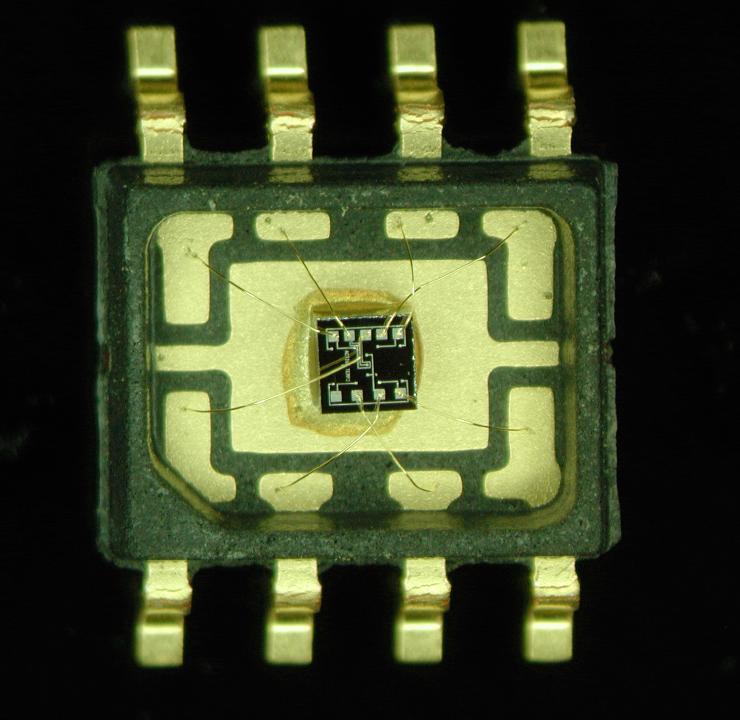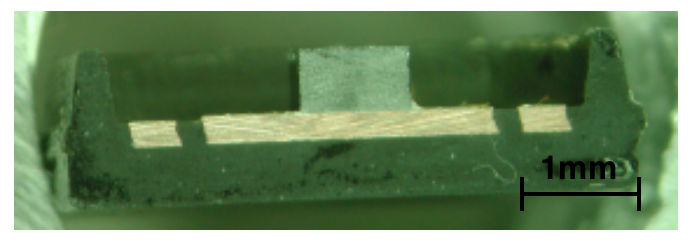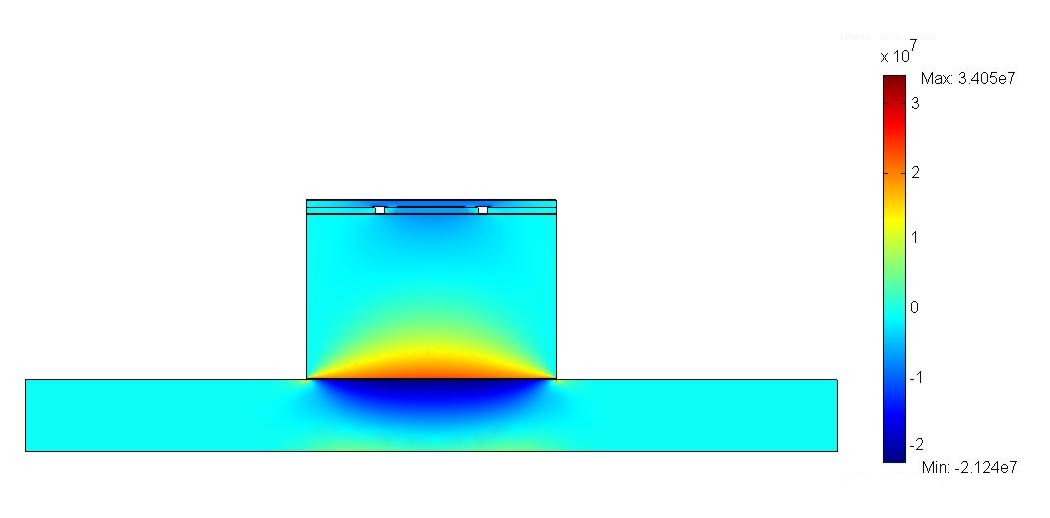
| BACK to High-Stability Resonators | ||||
| Resonator Sensitivity to Axial Stress | ||||
|
The resonant frequency of a fixed-fixed beam is a strong function of the axial stress in the beam. Beam resonators with anchors at both ends, including double-anchored double-ended tuning forks (DA DETF), are susceptible to axial stresses introduced by the differential thermal expansion of the die substrate, the resonator, and the electrical package used for testing. Devices bonded with a thermal cure epoxy ("hard attach") or photoresist ("soft attach") exhibit dramatically different TCf, because the soft-attach method transmits less stress into the silicon die from the thermal expansion of the package lead frame than the hard-attach method. A photograph of the cross-section of a packaged resonator and simulations of the resulting stress distribution are shown in Figure 1. |
||||
|
||||
|
TCf results reported in the literature for silicon MEMS resonators of various types are typically 10-30 ppm/C [3,4,5]. Our silicon, double-anchored 1.3MHz resonators with a hard-attach packaging have TCf values of 120-200 ppm/C, while soft attach parts have values of 30-40 ppm/C. Single-anchored designs fabricated in the same technology have TCf values ~28 ppm/C. Typical measured TCf values and simulation results are shown in Figure 2. |
||||
|
||||
|
BACK to High-Stability Resonators |
Matt Hopcroft
Stanford University Department of Mechanical Engineering
Phone: (+1) 650-736-0044
Email: hopcroft _at_ stanford _ edu
Page Updated: 18 October, 2006



